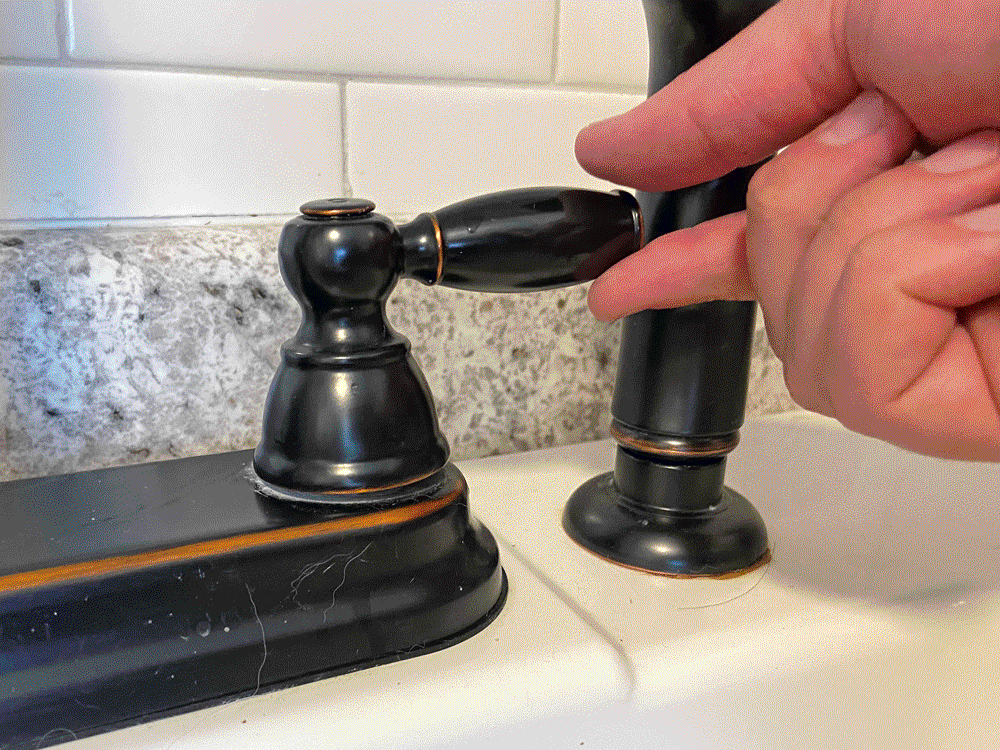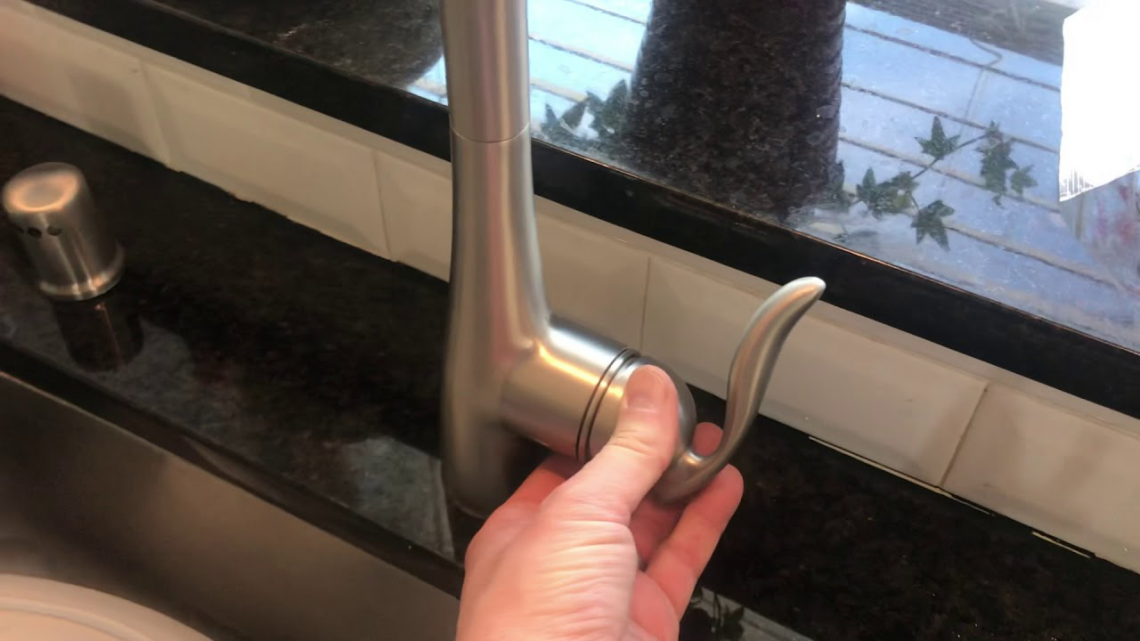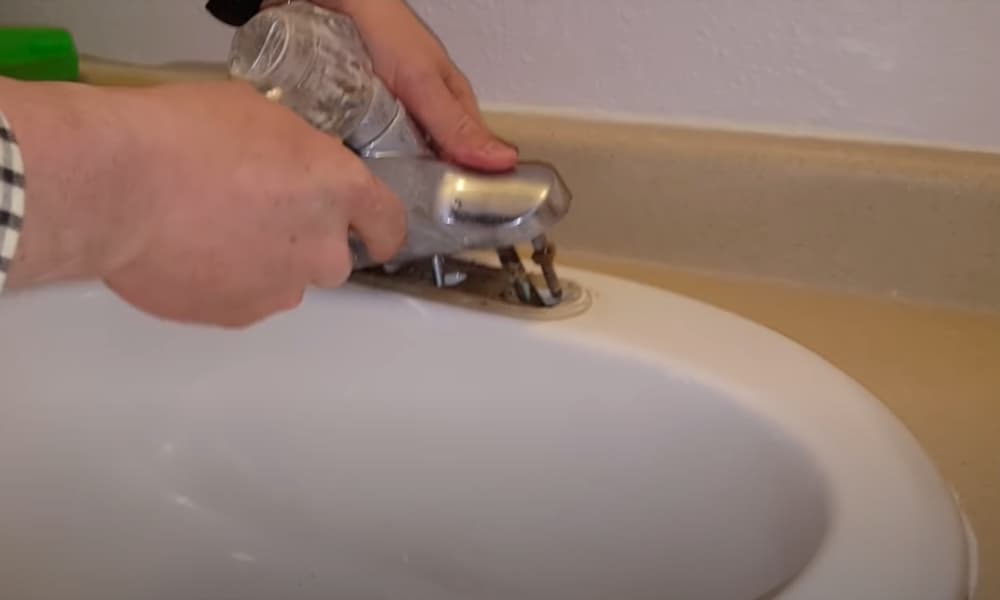Fixing a Hard to Turn Bathroom Sink Faucet Handle
If you've ever struggled with a hard to turn bathroom sink faucet handle, you know how frustrating it can be. Not only does it make simple tasks like washing your hands or brushing your teeth more difficult, but it can also be a sign of a bigger issue with your faucet. Luckily, there are several ways to fix a stiff or tight faucet handle without having to call a plumber. In this article, we'll explore some common causes of a hard to turn bathroom sink faucet handle and provide easy solutions to get it working smoothly again.
How to Repair a Hard to Turn Bathroom Sink Faucet Handle
Before attempting to fix a hard to turn bathroom sink faucet handle, it's important to understand how the handle and faucet work together. The handle is connected to a valve that controls the flow of water. When you turn the handle, it opens or closes the valve to allow water to flow. Over time, the valve can become stiff or worn out, making it difficult to turn the handle. Here's how you can repair it:
Step 1: Start by turning off the water supply to your faucet. This is usually located under the sink or in the main water shut-off valve for your house.
Step 2: Remove the handle by unscrewing the set screw located on the underside of the handle. This may require an Allen wrench or screwdriver.
Step 3: Inspect the valve for any debris or buildup. This can often cause the handle to become hard to turn. Clean the valve with a cloth and some mild soap or vinegar.
Step 4: If the valve appears damaged or worn out, it may need to be replaced. You can purchase a new valve at your local home improvement store.
Step 5: Reattach the handle and turn the water supply back on to test the faucet. If it still feels stiff, you may need to lubricate the valve (more on that later).
Troubleshooting a Bathroom Sink Faucet Handle That is Difficult to Turn
If repairing the valve doesn't solve the issue, there may be another problem causing your bathroom sink faucet handle to be hard to turn. Here are some troubleshooting tips to help you identify and fix the issue:
Low water pressure: If you notice that the water pressure in your faucet is low, it could be a sign of a clog. Try removing the aerator (the small mesh screen at the end of the faucet) and cleaning it. If the pressure is still low, you may need to clean the faucet cartridge or replace it.
Mineral deposits: Over time, mineral deposits can build up in your faucet, causing it to become stiff and hard to turn. You can use a descaling solution or a mixture of vinegar and water to remove these deposits.
Worn out parts: The handle and other parts of your faucet can wear out over time. If you notice any cracks or damage, it may be time to replace them. You can find replacement parts at most home improvement stores.
Old faucet: If your faucet is old and has been used for many years, it may be time to replace it altogether. Newer faucets are designed to be more durable and require less maintenance.
Easy Solutions for a Stiff Bathroom Sink Faucet Handle
There are a few quick and easy solutions you can try to loosen a stiff bathroom sink faucet handle. These include:
Using a wrench: If your faucet handle is stuck, you can try using a wrench to loosen it. Place a cloth over the handle to protect it and use an adjustable wrench to gently turn the handle counterclockwise.
Applying heat: If you have a metal faucet handle, you can use a hairdryer to apply heat to the handle. This can help loosen any mineral deposits or debris that may be causing the handle to be hard to turn.
Adding lubricant: As mentioned earlier, lubricating the valve can help ease the movement of your faucet handle. You can use a silicone-based lubricant or plumber's grease for this purpose.
Tips for Loosening a Tight Bathroom Sink Faucet Handle
If none of the above solutions work, here are a few additional tips that may help loosen a tight bathroom sink faucet handle:
Use hot water: Run hot water over the handle for a few minutes to help loosen any debris or buildup.
Wiggle the handle: Sometimes, simply wiggling the handle back and forth can help loosen it up.
Tap the handle: Use a rubber mallet or hammer to gently tap the handle. This can help dislodge any debris or mineral deposits.
Common Causes of a Hard to Turn Bathroom Sink Faucet Handle
There are several reasons why your bathroom sink faucet handle may be hard to turn. Some of the most common causes include:
Buildup of debris or mineral deposits: This is the most common cause of a stiff faucet handle. Over time, debris and mineral deposits can accumulate in the valve, making it difficult to turn.
Worn out parts: As mentioned earlier, the handle and other parts of your faucet can wear out over time, especially if they are used frequently.
Low water pressure: A clog or other issues with your plumbing can cause low water pressure, making it harder to turn the faucet handle.
Old faucet: If your faucet is old and has been used for many years, it may be more prone to issues like stiffness or leaks.
Quick Fixes for a Bathroom Sink Faucet Handle That Won't Turn
If you're short on time and need a quick fix for your hard to turn bathroom sink faucet handle, here are some easy solutions you can try:
Use WD-40: Spray some WD-40 on the valve and let it sit for a few minutes before trying to turn the handle again.
Try a plunger: If you're dealing with a particularly stubborn faucet handle, you can try using a plunger to loosen it. Place the plunger over the handle and push down gently, then try turning the handle again.
Replace the handle: If all else fails, you may need to replace the handle altogether. This may be necessary if the handle is damaged or worn out.
Preventing a Bathroom Sink Faucet Handle from Becoming Hard to Turn
The best way to deal with a hard to turn bathroom sink faucet handle is to prevent it from happening in the first place. Here are some tips to help keep your faucet handle in good working condition:
Clean your faucet regularly: Regularly cleaning your faucet and removing any buildup or debris can help prevent stiffness and other issues.
Use gentle cleaners: Avoid using harsh chemicals or abrasive cleaners on your faucet as they can damage the finish and cause the handle to become stiff.
Fix leaks promptly: A leaky faucet can lead to bigger problems down the line, so it's important to fix any leaks as soon as you notice them.
Replace worn out parts: If you notice any cracks or damage to your faucet handle or other parts, replace them before they cause bigger problems.
How to Lubricate a Bathroom Sink Faucet Handle for Smooth Turning
Lubricating your faucet handle can help prevent stiffness and make it easier to turn. Here's how you can do it:
Step 1: Turn off the water supply to your faucet.
Step 2: Remove the handle and set it aside.
Step 3: Clean the valve with a cloth and some mild soap or vinegar.
Step 4: Apply a small amount of silicone-based lubricant or plumber's grease to the valve.
Step 5: Reattach the handle and turn the water supply back on to test the faucet.
Replacing a Worn Out Bathroom Sink Faucet Handle to Improve Turning
If your faucet handle is old and worn out, it may be time to replace it. Here's how you can do it:
Step 1: Turn off the water supply to your faucet.
Step 2: Remove the handle by unscrewing the set screw.
Step 3: Take the old handle to your local home improvement store to find a replacement that fits the same size and style.
Step 4: Install the new handle by following the manufacturer's instructions.
Step 5: Turn the water supply back on to test the new handle.
In conclusion, a hard to turn bathroom sink faucet handle can be a frustrating issue, but with these tips and solutions, you can get it working smoothly again in no time. Remember to regularly clean and maintain your faucet to prevent future issues, and don't hesitate to call a plumber if you encounter any major problems. With a little TLC, your bathroom sink faucet handle will be turning with ease once again.
Bathroom Sink Faucet Handle Hard to Turn: Causes and Solutions

The Importance of a Functional Bathroom Sink Faucet
 The bathroom sink faucet is a crucial part of any household, as it is used multiple times a day for various tasks such as washing hands, brushing teeth, and even filling up a glass of water. However, when the handle of the faucet becomes hard to turn, it can be a frustrating and inconvenient experience. Not only does it make simple tasks more difficult, but it can also be a sign of underlying issues with the faucet. In this article, we will discuss the possible causes of a hard-to-turn bathroom sink faucet handle and provide solutions to fix the problem.
The bathroom sink faucet is a crucial part of any household, as it is used multiple times a day for various tasks such as washing hands, brushing teeth, and even filling up a glass of water. However, when the handle of the faucet becomes hard to turn, it can be a frustrating and inconvenient experience. Not only does it make simple tasks more difficult, but it can also be a sign of underlying issues with the faucet. In this article, we will discuss the possible causes of a hard-to-turn bathroom sink faucet handle and provide solutions to fix the problem.
Possible Causes of a Hard-to-Turn Faucet Handle
 There are several reasons why your bathroom sink faucet handle may become hard to turn. The most common cause is the accumulation of mineral deposits, also known as limescale, inside the faucet. Over time, these deposits can build up and affect the smooth movement of the handle. Another possible cause is a worn out or damaged cartridge, which is responsible for controlling the flow and temperature of water. Additionally, a loose or faulty handle could also be the culprit, making it difficult to turn the faucet on and off.
There are several reasons why your bathroom sink faucet handle may become hard to turn. The most common cause is the accumulation of mineral deposits, also known as limescale, inside the faucet. Over time, these deposits can build up and affect the smooth movement of the handle. Another possible cause is a worn out or damaged cartridge, which is responsible for controlling the flow and temperature of water. Additionally, a loose or faulty handle could also be the culprit, making it difficult to turn the faucet on and off.
Solutions to Fix a Hard-to-Turn Faucet Handle
 The good news is that a hard-to-turn faucet handle is a common issue and can be easily fixed. One solution is to clean the faucet thoroughly using a descaling solution or a mixture of vinegar and water. Soak a cloth in the solution and wrap it around the faucet, leaving it for a few hours to dissolve the mineral deposits. Afterwards, scrub the faucet with a soft brush and rinse it with water. This should improve the movement of the handle.
If the handle is still hard to turn, the next step would be to replace the cartridge. You can purchase a new cartridge from a hardware store and follow the manufacturer's instructions to remove the old one and install the new one. This should resolve any issues with the flow and temperature of water. If the handle is loose or faulty, it may need to be tightened or replaced altogether.
The good news is that a hard-to-turn faucet handle is a common issue and can be easily fixed. One solution is to clean the faucet thoroughly using a descaling solution or a mixture of vinegar and water. Soak a cloth in the solution and wrap it around the faucet, leaving it for a few hours to dissolve the mineral deposits. Afterwards, scrub the faucet with a soft brush and rinse it with water. This should improve the movement of the handle.
If the handle is still hard to turn, the next step would be to replace the cartridge. You can purchase a new cartridge from a hardware store and follow the manufacturer's instructions to remove the old one and install the new one. This should resolve any issues with the flow and temperature of water. If the handle is loose or faulty, it may need to be tightened or replaced altogether.
Preventative Measures to Avoid a Hard-to-Turn Faucet Handle
 To avoid the inconvenience of a hard-to-turn faucet handle, it is important to take preventative measures. Regularly cleaning the faucet with a descaling solution can prevent the build-up of mineral deposits. You can also install a water softener to reduce the amount of mineral deposits in your water. Additionally, be gentle when using the faucet handle and avoid forcing it to turn, as this can cause damage.
In conclusion, a hard-to-turn bathroom sink faucet handle can be a frustrating problem, but it is one that can be easily fixed. By understanding the possible causes and implementing the appropriate solutions, you can have a fully functional faucet in no time. Remember to take preventative measures to avoid this issue in the future and always consult a professional if you are unsure about fixing the problem yourself.
To avoid the inconvenience of a hard-to-turn faucet handle, it is important to take preventative measures. Regularly cleaning the faucet with a descaling solution can prevent the build-up of mineral deposits. You can also install a water softener to reduce the amount of mineral deposits in your water. Additionally, be gentle when using the faucet handle and avoid forcing it to turn, as this can cause damage.
In conclusion, a hard-to-turn bathroom sink faucet handle can be a frustrating problem, but it is one that can be easily fixed. By understanding the possible causes and implementing the appropriate solutions, you can have a fully functional faucet in no time. Remember to take preventative measures to avoid this issue in the future and always consult a professional if you are unsure about fixing the problem yourself.














































































